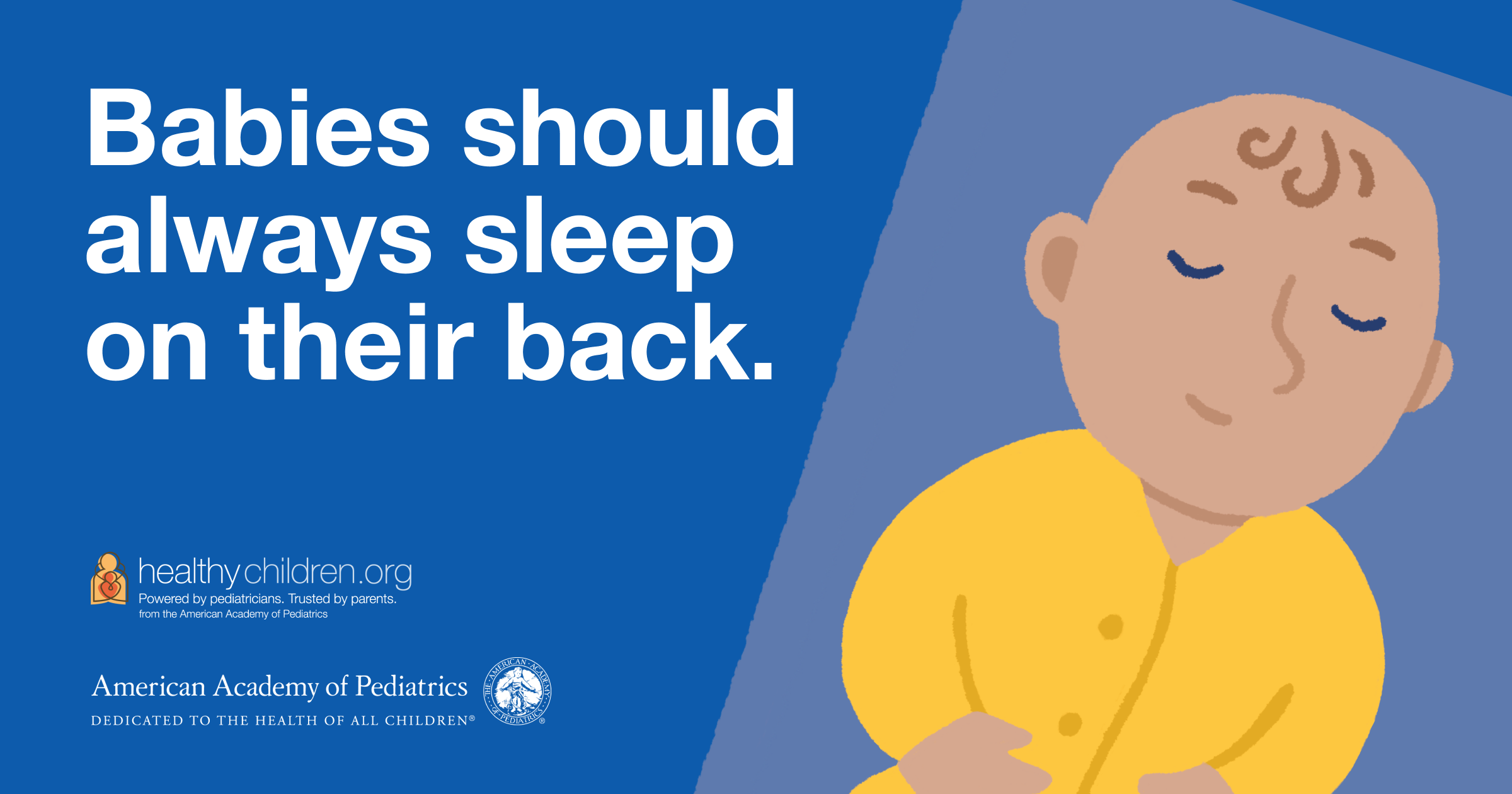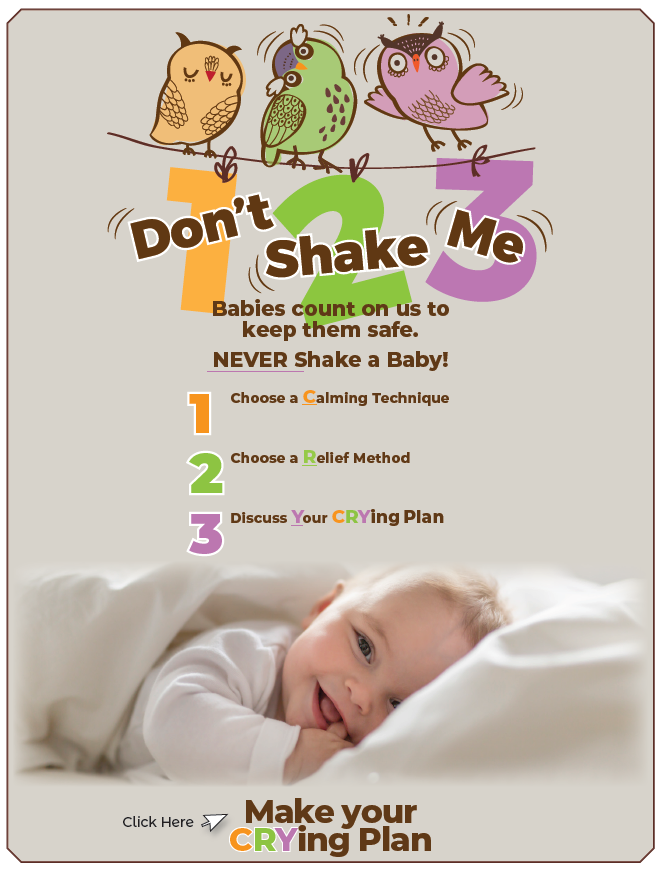No
Safe Sleep Practices
In 2022, the American Academy of Pediatrics introduced recommendations to promote safe sleep for infants. These recommendations stress the importance of using safe sleep practices in an effort to prevent Sudden Unexpected Infant Death (SUID) and Sudden Infant Death Syndrome (SIDS). Safe sleep practices are the things that you CAN do to keep your baby safe during sleep.
- Always place your baby on their back to sleep
- Use a firm, flat surface for baby to sleep
- Breastfeeding is best
- Baby can sleep in your same room, but on their own surface
- Remove all soft, fluffy objects or pillows, blankets/quilts/loose bedding from baby's sleep space
- A pacifier at bedtime or naptime is okay
- Prenatal care for pregnant moms
- During and after pregnancy- avoid exposure to smoke, nicotine, alcohol, illicit drugs, marijuana and opioids
- Avoid overheating the baby
- Immunize baby
- Place your baby on their back to sleep
Supervised tummy time is okay for short periods, gradually increase to a TOTAL of 15 -30 minutes daily by infants' age of 7 weeks if okay with their provider.
There are some practices that have changed over the years that may be different from what our parents and grandparents did before us. Teach your baby's caregivers about safe sleep for your baby.
For additional information about safe sleep practices, sudden unexplained infant death, and sudden infant death syndrome, visit:

Abusive Head Trauma and Shaken Baby Syndrome
The act of violently shaking a baby so hard it causes harm is known as Shaken Baby Syndrome (SBS). This type of child abuse is a subset of a larger category of harm known as Abusive Head Trauma (AHT).
- SBS and AHT are forms of child abuse.
- SBS and AHT are preventable.
- SBS and AHT are not acceptable.
The National Center on Shaken Baby Syndrome shares daunting information about SBS/AHT:
- Occurs most often in babies less than 6 months-old
- Approximately 80% of babies will suffer lifelong disabilities.
- Approximately 25% of babies who experience this type of abuse will die.
- Leading cause of child abuse death in the United States
Having a baby is stressful for you, your partner, the baby's caregivers. The consequences of abuse are devastating to all involved in these situations.
Protect your baby. Have a plan to keep your baby safe when you or their caregiver is feeling overwhelmed with caring for a baby. The  Brain Injury Alliance and the
Brain Injury Alliance and the  National Center on Shaken Baby Syndrome share additional information about abusive head trauma, shaken baby syndrome and brain injury.
National Center on Shaken Baby Syndrome share additional information about abusive head trauma, shaken baby syndrome and brain injury.
 See the accessible PDF.
Learn steps to help you cope with a newborn's normal behaviors and to prevent abusive head trauma and shaken baby syndrome:
See the accessible PDF.
Learn steps to help you cope with a newborn's normal behaviors and to prevent abusive head trauma and shaken baby syndrome:Newborn Resources
Learn more about resources available to you for caring for your newborn:
For help finding childcare or other provider, visit our Resources page.
Be kind to yourself and your baby. You can do this!